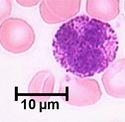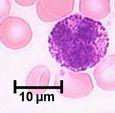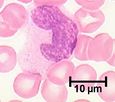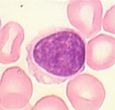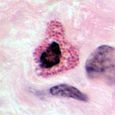Blood Cells - Overview
Introduction
Blood cells develop in the bone marrow from a common stem cell in the process known as haematopoiesis. Once mature, cells are divided into groups that reflect their morphological and functional characteristics including the erythrocytes, or red blood cells, the granulocytes, the agranulocytes and the megakaryocytes.
The megakaryocyte is found in bone marrow samples, and develops into thrombocytes (platelets) prior to release into the blood stream. The granulocytes are white blood cells, or leukocytes that have a granular cytoplasm and polymorphic nuclei; this group includes neutrophils, eosinophils, and basophils. The neutrophils are the most common cell in this group, and they function together with the other granular cells as part of the non specific natural immune response to infection and the inflammatory response to tissue injury. The agranulocytes include lymphocytes and monocytes. Lymphocytes differ from granulocytes and monocytes as they form part of the acquired immune response, dividing into B or T cells to fight attacks by foreign cells, bacteria and viruses. Monocytes leave the blood stream to enter tissues where they become macrophages, which engulf bacteria and tissue debris by phagocytosis. Other cell types found in tissues include mast cells, which are found in mucosal and connective tissues and are granular in nature.
White Blood Cells
Granulocytes:
Agranulocytes:
Tissue Cells
| Blood Cells - Overview Learning Resources | |
|---|---|
 Test your knowledge using drag and drop boxes |
Blood Histology Resource (I) Blood Histology Resource (II) Blood Histology Resource (III) |
